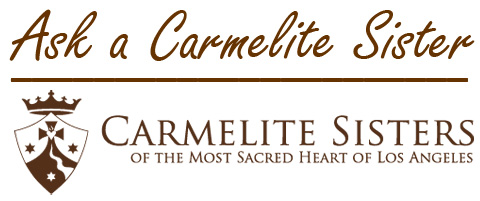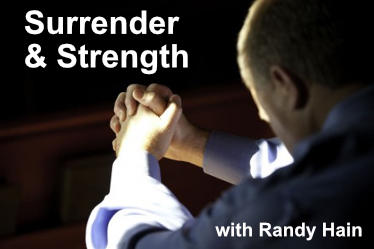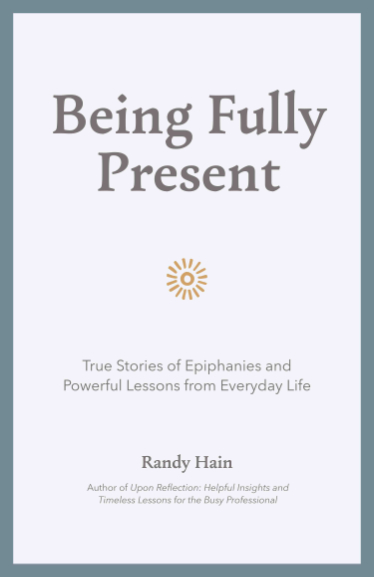
Dear Sister,
In your series on getting stuck in spiritual growth (which was very helpful by the way) you mentioned the idea of “attachments.” I think I understand this as I have read a bit of St. John of the Cross. However, I would be grateful if you could help me understand it a bit better and for any practical advice about identifying attachments and then shedding them. I remember St. John of the Cross said that a bird is tethered to the earth with a small string or a large rope. It doesn’t matter how significant the attachment, but any attachment will hinder our flight to God. Thank you for giving your life to the Church sister. We are so grateful to you for your love of Christ and the depth of your ability to help us love him too.
What are Attachments?
Dear Friend,
St. John of the Cross uses a striking example to illustrate the need for the mortification of all voluntary desires. Just what did St. John of the Cross mean when he said that a bird is tethered to the earth whether with a small string or with a large rope (Ascent, Chapter 11, #4)? Simply this, it doesn’t matter how significant the attachment, as any attachment will hinder our flight to God.
Not too long ago I was called upon to help a bird in distress. It was a female Gambel’s quail that had flown into our chain-linked fence and become totally attached. The bird, which obviously had been there awhile, looked frightened and miserable with its neck stuck in one chain link and each foot and wing in a different chain link. It was held immobile by five different links. There was no way the bird could free itself! I slowly approached to lessen the stress of fear for the bird and worked on freeing its neck first, then each foot. I was apprehensive about working with the wings for fear of breaking them. All went well however and when the second wing was freed, the bird immediately knew it was no longer attached and exploded into the air winging its way across the desert.
Certainly this example shows how attachment hinders freedom. But let’s move this to the spiritual realm. In the Modern Catholic Dictionary, Father John A. Hardon, S.J. defines an attachment as follows: “Emotional dependence either of one person on another, or of a person on some real or illusory object …the first condition for progress in sanctity is some mastery over one’s attachments.”
Scripture affirms that Creation is good; after each creation account we read,”… and God saw that it was good.” When God had made man He saw that it was very good and He gave him dominion over the other creatures. Thus there was a hierarchy in creation. God provided for man’s needs. Endowed with sensory perception we not only interact with creation to supply our needs but we take pleasure in creation through our senses of sight, hearing, smell, taste and touch. In creating the world in which God has placed us He has endowed it with a beauty, perceived through our various senses, which is but a meager reflection of His own infinite Beauty. He intends that we enjoy this beauty as a way of leading us to Him, not to seek it for itself.
We fail to practice mastery over our attachments when we use them
- in excess of our needs;
- for purposes other than that for which they were intended;
- as ends rather than as means to a legitimate end.
The most fundamental basis of our spiritual life is the recognition that we are creatures and that God is our Creator. To prefer a creature to the Creator has made us prefer a lesser good. When we cling to a creature we become like that creature. No matter how good that creature may be, it is nevertheless finite. If we are attached to what is finite we will be unable to enter into the transforming union of the infinite – Divine Beauty.
“For what has the creature to do with the Creator? What has sensual to do with spiritual? Visible with invisible? Temporal with eternal? Food that is heavenly, spiritual and pure with food that is of sense alone and is purely sensual? Christlike poverty of spirit with attachment to aught soever?” (Ascent, Chapter 4, #1)
We have defined and illustrated what attachments are and how they can hinder our flight to God. Now, we will talk a bit more about attachments and then provide a few questions and guidelines to help us identify our own attachments.
Attachments are often difficult for us to recognize or admit in ourselves. We can become quite adept at rationalization and transferring the responsibility for our situation on someone else or something else. In the book, The Lion, the Witch and the Wardrobe by C.S. Lewis, one of the child characters, Edmund, has a fondness for Turkish Delight, a sweet tasting treat. On entering Narnia he encounters the Witch, who in order to gain information from him provides him with this treat. The more he eats of it, the more he wants. No matter how much he eats he thinks only of eating more. She eventually stops giving it to him with the promise that if he comes to her home bringing his three siblings she will provide him with rooms of this delight.
His desire for this treat now has its negative consequences. Not only does he feel ill from having eaten to excess, but his desire to still have more of this food breaks down his relationship with his siblings causing him to lie to them. He begins to form negative feelings toward them by becoming suspicious of them as well as blaming them for the situations in which he finds himself, and eventually he betrays them.
How Can I Determine If I Am Attached To Something?
Selfish clingings position us in a spiritual fog hindering our supernatural vision. It then becomes difficult to discern between what is a legitimate desire and what is an inordinate attachment. The following questions may help us in our honest self-knowledge:
- Am I using created things in excess of my real needs? Example: How many pairs of shoes do I have as opposed to how many I need? We can apply this to any material possession. How many hours do I spend viewing TV?
- Do I use things for the purpose for which they were intended? Example: If my employer provides me with a computer for my work, do I spend time in using it for personal e-mail, needless internet surfing or entertainment (assuming there is a policy against such use)?
- Do I make persons or things ends in themselves rather than as means to an end? Example: Is my relationship with another the way by which my own needs are provided for more than my concern for the good of the other?
In responding to the above as regards my relationships and my use of things, am I more drawn to God through them and do they cause me to think of Him more frequently? Am I led to deeper prayer as a result?
Identifying inordinate attachments, recognizing them in oneself, and addressing them through a practical plan of detachment enables one to experience a greater freedom and to be open to the gifts that God wishes to lavish on us. “Blessed are the pure of heart for they shall see God.”
Sincerely in the Sacred Heart of Jesus,
Sister Mary Colombiere, O.C.D.
Send your questions for Sister to asksister@integratedcatholiclife.org.
If you liked this article, please share it with your friends and family using the Share and Recommend buttons below and via email. We value your comments and encourage you to leave your thoughts below. Thank you! – The Editors
To learn more about the Carmelite Sisters of the Most Sacred Heart of Los Angeles, read their biography in the left-hand sidebar and visit their website (link provided at the bottom of the bio).
We encourage you to support the work of the sisters with your prayers and through donations and planned giving. Click here to learn more..
If you hear God calling you to the religious life, I encourage you to visit their vocations page. – Deacon Mike
Or for more information, please contact:
Sister Grace Helena, OCD, Vocation Directress
920 East Alhambra Road
Alhambra, California 91801














